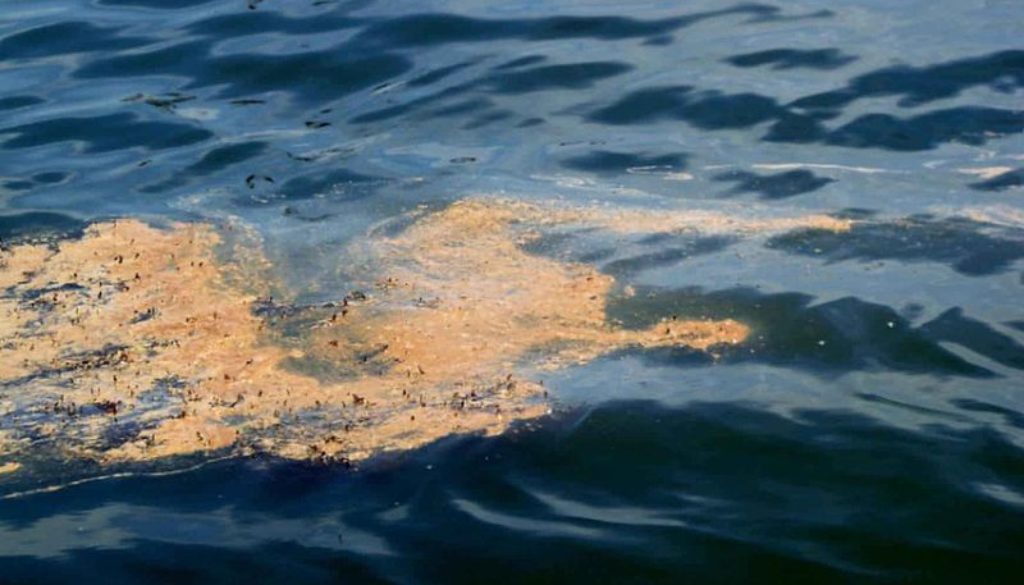Save Our Arctic and Atlantic Waters Now
By Rhea Suh, Natural Resources Defense Council
This week, NRDC and our environmental partners called on President Obama to take precious Arctic and Atlantic waters off the table, permanently, to oil and gas drilling and all the harm and hazard it brings. Today we also delivered to the White House more than 2 million petition signatures opposing drilling off the Arctic and Atlantic coasts.
We need to protect these waters and all they support, not expose them to new risk that locks future generations into more of the fossil fuel dependency that’s driving global climate change. It’s time to speak up and be heard.
Sometime in the next few weeks, the Department of the Interior will release its plans for offering federal waters along the outer continental shelf for lease to oil and gas producers for a five-year period starting in 2017. In the past, these five-year lease plans have focused on oil and gas leasing in the Gulf of Mexico, where decades of fossil fuel production have taken a mounting and unacceptable toll. In its initial proposal last year for the 2017-2022 period, though, the administration suggested leasing both in the Arctic – despite the enormous challenges and dangers posed there – and in Atlantic waters off the East Coast from Delaware to northern Florida.
That would be a mistake. We’ve got to prevent it from happening. Here’s why.
None of us have forgotten April 20, 2010, when BP’s Macondo well blew out in the Gulf of Mexico, killing 11 workers, destroying the Deepwater Horizon drilling vessel, and polluting rich marine and coastal habitat with millions of gallons of toxic crude oil in the 87 days it took to plug the gushing well. The enduring lesson of the BP disaster is that we must do far better at protecting our workers, waters, and wildlife from needless and reckless risk.
That starts with strengthening safeguards in the Gulf, and we’ve called for robust action to do just that. It also means not exposing new areas to threat. Here’s where the administration has a historic opportunity to get this right.
Atlantic waters have been off the table for oil and gas exploration and drilling for more than 30 years, and for good reason. Those waters support hundreds of coastal communities up and down the Eastern Seaboard, more than a million jobs, and scores of millions of dollars each year in economic output stemming from fishing, tourism, recreation, and other activities tied directly to healthy waters and coasts.
From Miami to New Jersey, leaders of more than 100 East Coast municipalities have come out to say no to offshore drilling. They’ve been joined by more than 650 state and local elected officials and more than 100 members of Congress.
The BP disaster covered more than a thousand miles of coastline with oil. That’s the distance from Savannah to Boston. No wonder local leaders are concerned that a blowout off our southern or mid-Atlantic coast could threaten waters and shorelines far and wide. That’s a flat-out nonstarter, A to Z.
The Arctic Ocean is a special place. It’s got special resources and special hazards. It’s no place for the risks of oil and gas production – as the industry itself has proved.
Four years ago, Shell Oil had one mishap after another trying to drill there. It lost control of two oil rigs, one of which crashed into rocks and had to be rescued by the Coast Guard. An ice floe the size of Manhattan halted drilling the day it started. Evacuation helicopters were grounded, fuel spilled, containment systems failed. When it returned to drilling last summer, Shell encountered additional problems and ultimately canceled its plans altogether. And the Obama administration took Arctic waters off the table for further drilling until at least 2017.
It’s time to protect those waters from reckless drilling for good. Again, it’s no real mystery why.
Pack ice makes Arctic sea travel all but impossible eight months each year for anything other than icebreakers. Gale-force winds can churn up waves as high as a three-story building. Wind chill temperatures reach 10 below zero by late September. Think the industry can prevent, contain, or clean up an oil spill there? No way. The industry lacks the equipment, know-how, and experience to do it, period. And the nearest Coast Guard station is more than 1,000 miles away. You can’t dial 911 to contain a blowout in Arctic waters. That’s why drilling there is a reckless gamble we can’t afford.
The Arctic, moreover, is one of the last ocean frontiers on earth. It provides essential habitat for a vast array of marine life, from the tiniest plankton to the great bowhead whale. Polar bears, walrus, and millions of migratory birds depend on healthy Arctic waters, ice, and coasts. And these waters are among the most productive fisheries anywhere in the world, teeming with fish and crabs.
Last month, in his final State of the Union address, President Obama called on the nation to fight climate change by reducing our reliance on fossil fuels and speeding the shift to cleaner, smarter ways to power our country without threatening our kids. “Rather than subsidize the past,” he said, “we should invest in the future.”
Our future depends on cutting carbon pollution, not locking ourselves into more and more of it.
Our future depends on shifting to clean energy sources, not anchoring our children to the dirty fuels of the past.
Our future depends on healthy oceans, not exposing new waters to pollution and risk.
Let the president know you stand with the millions of us fighting to protect Arctic and Atlantic waters for good. Let him know that investing in a brighter future means taking those waters off the table – permanently – to oil and gas drilling and all the hazard and harm it brings.

